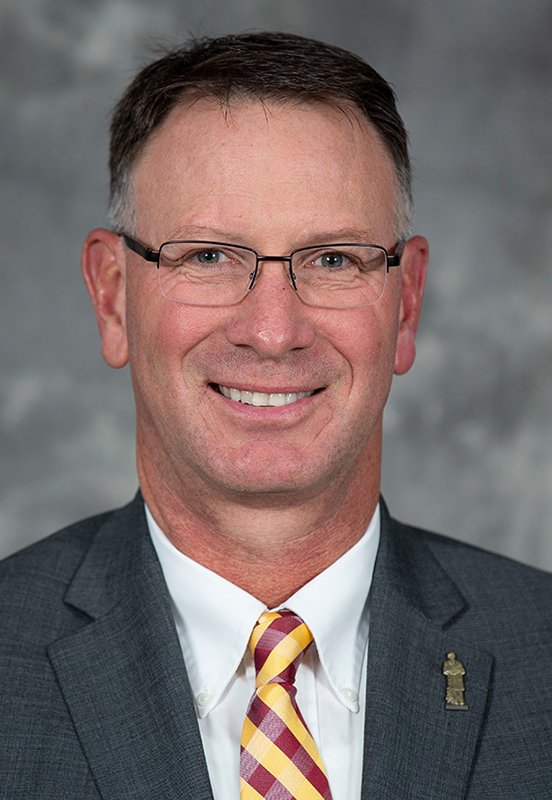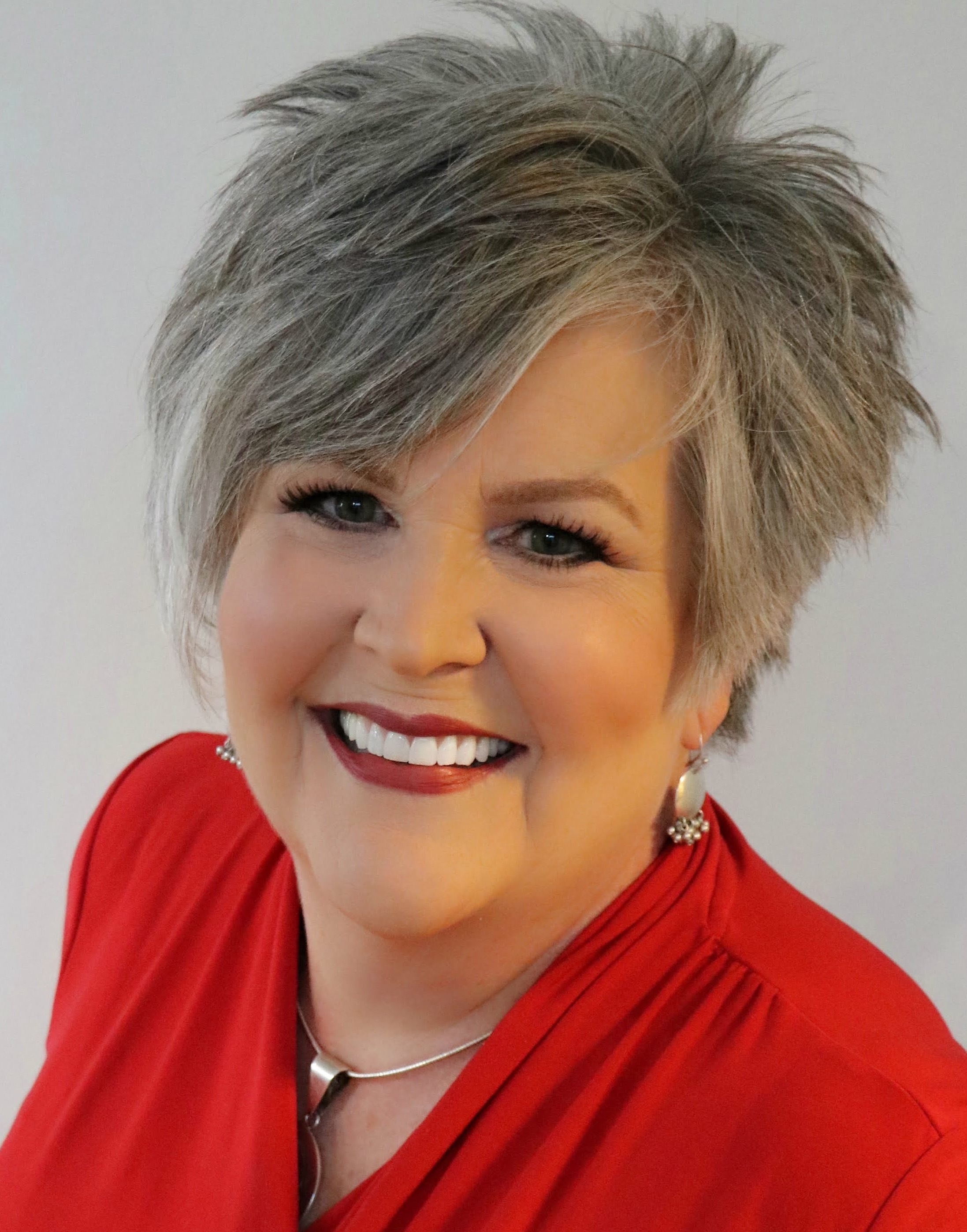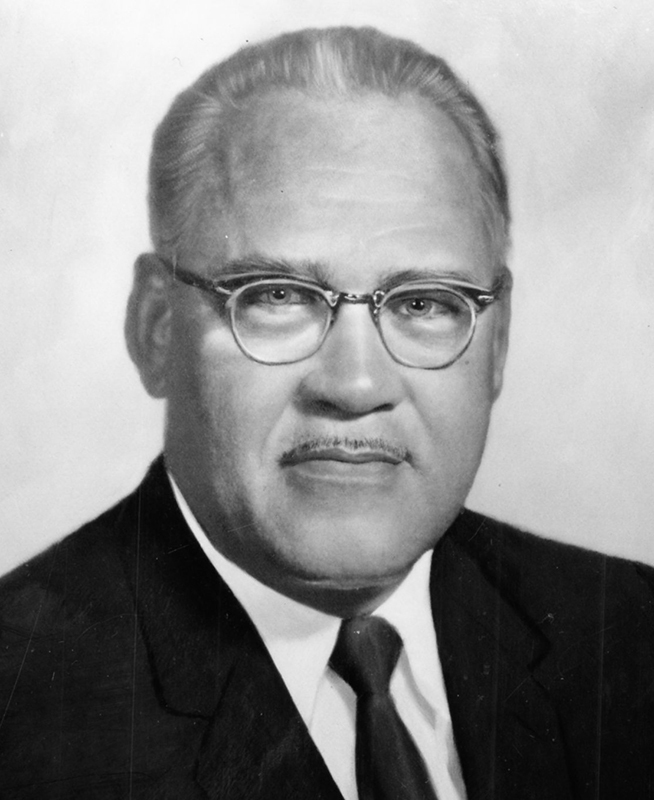An update from behind that green fence

Photo by Christopher Gannon.
Work continues this fall to replace the fountain pool on the north lawn of the Memorial Union. It's part of a larger project to replicate Christian Petersen's 80-year-old Fountain of the Four Seasons sculpture.
A team from Des Moines-based Neumann Brothers was building concrete forms earlier this week for the center ring wall that will support a new fountain and four limestone maiden sculptures. It was scheduled to be poured yet this week. Next up is waterproofing the pool surface (in a forest green shade to match Petersen's original color selection) and finally, setting the new stone for the outer pool wall and adjacent seating. The pool portion of the project will wrap up in November.
University museums staff report the four replicate maiden sculptures will arrive on campus from Vermont late next summer. Once they are installed, the pool will be filled and the fountain turned on.
Difficulties finding similar (to the original) Bedford limestone and July flooding in Vermont that impacted the sculptor's studio and home have added several months to the original project timeline.
Flu shot clinic is Oct. 9-20
ISU WellBeing and occupational medicine will offer a free flu shot clinic next month for two weeks, Oct. 9-20 (Monday through Friday, 9 a.m.-4 p.m.), at the fitness studio (Room 1218) in State Gymnasium. The Centers for Disease Control and Prevention (CDC) recommend flu shots for those 6 months and older.
Protect yourself and others
- Avoid close contact with people who are sick
- Stay home when you are sick
- Cover your mouth and nose
- Wash your hands often
- Avoid touching your eyes, nose or mouth
No appointment or registration is needed, and participants will check in electronically when they arrive. More than 2,700 shots were given during last year's clinic, said Ames Laboratory senior nurse Kori Grooms.
The vaccine is available for these employee groups:
- Faculty, professional and scientific, merit and postdocs
- University child care centers
- Retirees on the university health plan who are not yet 65
- ISU Foundation
- Iowa State Daily
These employees are encouraged to use the clinic to receive the shot because it is most cost effective with the ISU medical plan. Those who choose to receive the vaccine at a pharmacy or health care provider's office may have a copay apply.
"We really encourage employees to use this clinic because it is free and it is efficient," said ISU WellBeing coordinator Stephanie Downs. "We are able to vaccinate nearly 50% of our employee base through the clinic and 75% overall."
Employees' spouses and children are not eligible for the clinic, but family members covered by ISU health insurance can receive a flu shot from their medical provider or a retail pharmacy. Visiting scholars and ISU students should contact the Thielen Student Health Center, 294-5801, for vaccination information.
Employees are encouraged to walk to the clinic at State Gym and enter through the southwest corner of the building. This year’s location is closer to the accessible entrance and two nurses will be administering the shots. Parking will be available in the general staff lot (Lot 1) south of the building that runs parallel to Sheldon Avenue. A limited number of free reserved spaces will be available close to the building. CyRide also stops next to State Gym on Union Drive.
"We have a pretty efficient process and it only takes a few minutes per person," Grooms said.
If possible, employees are asked to wear a short-sleeve or loose-fitting shirt to give the nurse easier access to an upper arm. Members of ISU WellBeing's Adventure2 wellness program will receive points for getting a flu shot.
A COVID-19 vaccine or booster is not available at this clinic. Those wanting one should contact their primary health care provider.
The vaccine
Employees who get a shot will receive a four-component vaccine that protects against A and B flu virus strains. The vaccine contains the four viruses recommended this season by the CDC:
- A/Victoria/4897/2022 (H1N1) pdm09-like virus
- A/Darwin/9/2021 (H3N2)-like virus
- B/Austria/1359417/2021-like virus (B/Victoria lineage)
- B/Phuket/3073/2013-like virus (B/Yamagata lineage)
Alternative forms of the vaccine for the 2023-24 flu season are not available at the clinic. Those who prefer a spray or mist vaccine or a high-dose vaccine should check with their primary doctor.
It takes about two weeks for antibodies that protect against the flu to fully develop. It's not possible to get the flu by receiving a flu shot because it is not a live virus, Downs said.
"The vaccine contains four strains of the virus and there are a lot of strains out there," Grooms said. “You may get the flu, but research shows that your symptoms are milder if you have gotten the vaccine.”
Availability of the flu vaccine after the clinic is dependent on supplies. Getting a dose will be by appointment only while supplies last. More information about the flu clinic is on the ISU WellBeing website or by calling the university human resources service center at 294-4800. Information on the 2023 flu vaccine is available through the CDC.
Begin to plan for health care changes in January
Employees are encouraged to begin planning now for changes to the university's health care plan on Jan. 1, including higher monthly premiums and some new shared costs for medical services. The changes were summarized in a Sept. 18 memo from university leaders and received final approval Sept. 28 from the state Board of Regents. Full details will be available Oct. 2 on the benefits' open enrollment website.
Overall health care coverage -- the range of services covered by employees' insurance plan -- will not change in the new plan year.
Learn more
Benefits virtual Town Hall: Wednesday, Oct. 4 (9-10:30 a.m. via Webex)
The cost-sharing changes come on the heels of three years of incremental premium adjustments that have failed to fully close a widening gap between total health care claims paid and premiums collected.
Iowa State contracts with Wellmark to administer its health care plan, but the university self-funds that plan and so must cover the difference when claims exceed premiums. More than 15,000 individuals -- employees, their partners and family members -- are covered by the ISU Plan. The university covered those differences -- at least $7.4 million each of the last two years -- from other funding sources; however, that's not a sustainable solution, said Ed Holland, director of benefits, university human resources.
Employees pay about 12% of the university's total health insurance premium each month, he noted. The remaining 88% is paid by their employing unit, one component of their overall fringe benefits package.
University also is taking on more costs
Depending on the plan and who's covered in it, employee monthly premiums will go up $4-$41 in the HMO plan and $6-$43 in the PPO option (see chart below). The university portion of all premiums is rising, too. To further address rising health care costs, key changes were made to the cost-sharing structure in both the HMO and PPO plans that will impact employees' out-of-pocket costs. Holland noted that even with these increases, ISU employee costs will remain significantly lower than in plans offered by other colleges and universities, as well as many private employers.
The HMO plan introduces an annual deductible, coinsurance and an annual out-of-pocket maximum. The PPO plan also adds an annual deductible requirement and bumps the coinsurance rate from 10% this year to 20% in 2024. Existing out-of-pocket caps for PPO participants aren't changing.
An expanding list of preventive health services and medications, authorized by the federal Affordable Care Act of 2010, will be fully covered without a copay or coinsurance in both the HMO and PPO plans. Starting in 2024, even the $15 office co-pay is waived on these services, which include annual wellness exams, immunizations and many kinds of health and mental health screenings.
What's not changing in 2024
There are no changes to covered services in the ISU Plan in 2024. There also are no changes to the plan's prescription service with Express Scripts. And that list of preventive health services will be fully covered without co-pays or coinsurance. Finally, coverage in Delta Dental's two plan options -- basic and comprehensive -- remains the same in 2024.
New mindset: Health care budgeting
Tackling higher health care claims solely with premium increases would distribute that expense across all participants, ignoring their actual use of the ISU Plan. However, also adding cost-sharing changes is a more balanced approach and encourages employees to be more involved in managing their own health care, in some cases contributing to efforts to lower costs. Taking advantage of the free preventive services each year is a good start, Holland said.
With Iowa State's annual health and dental insurance enrollment window scheduled for Nov. 1-17, he encouraged employees to use the next six weeks to learn more about the changes to the two plan options.
"Learning is where we want our employees to be. Learn as much as you can to be better prepared for the changes coming in January," he said.
How to learn more
Holland will lead a benefits virtual town hall for faculty and staff on Wednesday, Oct. 4 (9-10:30 a.m., via Webex). He'll walk participants through the plan changes and answer broadly applicable questions about the changes.
He encouraged employees who prefer a 1-on-1 conversation to schedule time with one of the four benefits specialists, each of whom is assigned to a faculty-staff group by their last names alphabetically. Starting next week, the Bookings app in Microsoft Teams will help employees make an appointment (virtual or in-person). Select a benefits specialist on the 2024 open enrollment website (scroll to "meetings with benefits office staff.") They also can be reached via the service center phone line, 294-4800.
For those who like to do their own research first, the benefits staff last fall introduced ALEX, a virtual and interactive benefits tool that explains how ISU's benefits work, analyzes the pros and cons of different offerings, asks questions that can help inform choices and proposes personalized suggestions for what benefits to select. On Monday, Oct. 2, ALEX will roll out with the 2024 ISU Plan data so the tool is helpful leading up to November's enrollment period.
The Oct. 12 edition of Inside Iowa State will be devoted to resources and tools to help employees understand the plan changes and prepare for their plan enrollment.
A comparison with peers
As mentioned, even with the increases, ISU employees' premiums remain below the national median for colleges and universities. According to data from the College and Universities Professional Association for Human Resources, for HMO plans, the national median employee premium for single coverage is $128/month compared to $33/month for Iowa State's plan, and family coverage is $449/month compared to $234/month for Iowa State's plan. Among PPO plans, the national median employee premium is $155/month for single coverage compared to $55/month at Iowa State, and $597/month for family coverage compared to $425/month at Iowa State.
Plan year 2024: Medical monthly premium increases
|
Coverage tier |
Jan. 1, 2024 |
|
Current (2023) |
|
|
|
Employee |
University |
Employee |
University |
|
BlueHMO |
|
|
|
|
|
Employee only |
$33 |
$635 |
$29 |
$571 |
|
Employee + spouse/partner |
$184 |
$1,351 |
$152 |
$1,226 |
|
Employee + child(ren) |
$120 |
$1,080 |
$100 |
$977 |
|
Employee + family |
$234 |
$1,719 |
$193 |
$1,560 |
|
Double spouse family |
$154 |
$1,799 |
$129 |
$1,624 |
|
BluePPO |
|
|
|
|
|
Employee only |
$55 |
$636 |
$49 |
$571 |
|
Employee + spouse/partner |
$332 |
$1,247 |
$298 |
$1,119 |
|
Employee + child(ren) |
$246 |
$986 |
$221 |
$885 |
|
Employee + family |
$425 |
$1,599 |
$382 |
$1,435 |
|
Double spouse family |
$302 |
$1,722 |
$270 |
$1,547 |
Plan year 2024: Dental monthly premium increases
|
Coverage tier |
Jan. 1, 2024 |
|
Current (2023) |
|
|
|
Employee |
University |
Employee |
University |
|
Basic |
|
|
|
|
|
Employee only |
$0 |
$24 |
$0 |
$23 |
|
Employee + spouse/partner |
$34 |
$24 |
$32 |
$23 |
|
Employee + child(ren) |
$41 |
$24 |
$39 |
$23 |
|
Employee + family |
$50 |
$24 |
$48 |
$23 |
|
Double spouse family |
$26 |
$48 |
$25 |
$46 |
|
Comprehensive |
|
|
|
|
|
Employee only |
$18 |
$24 |
$17 |
$23 |
|
Employee + spouse/partner |
$85 |
$24 |
$81 |
$23 |
|
Employee + child(ren) |
$91 |
$24 |
$87 |
$23 |
|
Employee + family |
$106 |
$24 |
$101 |
$23 |
|
Double spouse family |
$82 |
$48 |
$78 |
$46 |
Q&A: Why health care will cost employees more
Following the Sept. 18 announcement regarding salary increases and health care benefits changes for 2024, faculty and staff have raised a number of questions. Here are answers to some of the most common questions about these topics.
Explain again why employees will pay more for health care benefits in 2024?
The big picture is that health care costs continue to rise significantly. The premiums paid by you and the university aren't enough to cover expenses. According to the American Hospital Association, hospital expenses increased 17.5% between 2019 and 2022. Add into that national inflation, workforce shortages and sustained demand for hospital care. Nationally, the Kaiser Family Foundation's 24th Employer Health Benefits Survey found that the average family coverage premium increased 20% over the past five years and 43% during the past 10 years.
At the university level, the planned 2024 benefits changes will be the fourth year of a multiyear effort to counter rising costs, after seven years without changes to premiums. In recent years, premiums collected haven't been enough to cover claims costs. The university has worked to minimize the impact on employees by covering the shortfall with one-time funds from other sources. As costs have continued to rise, this is not a sustainable solution. Premium increases and plan design changes are necessary to maintain a financially viable benefits program. In 2024, premiums paid by ISU employees will cover approximately 12% of costs and the university will cover the remaining 88%.
How do ISU employee premiums compare to the national average?
ISU employee premiums remain far below the 2022 national average of $1,327 per year for employer-sponsored single coverage (all plans) and $6,106 per year for family coverage (all plans). In 2024, an ISU employee will pay $396 per year for BlueHMO single coverage or $2,808 per year for BlueHMO family coverage. ISU employees in BluePPO will pay $660 per year for single coverage or $5,100 for family coverage.
How do our employee premiums compare to what employees pay at other colleges and universities around the country?
In 2024, ISU employees in BlueHMO single coverage will pay $33 per month, compared to $128 monthly median premium paid at other colleges and universities (2023 College and Universities Professional Association for Human Resources benefits survey). ISU employees in BlueHMO family coverage will pay $234 per month, compared to $449 per month at other colleges and universities. See more on CUPA-HR comparisions.
Is coverage for mental health and substance abuse treatment changing?
No. No changes are being made to ISU's overall health care coverage. Your health care benefits will continue to include mental health and substance abuse services. What is changing is that now you will pay a copay each time you visit a provider for these services. If you're in the HMO plan, the copay is $15 per visit. If you're in the PPO plan, the copay is $25 per visit. Beyond the copay, you will not pay additional expenses for these services. Every copay counts towards your annual out-of-pocket maximum. If you reach your out-of-pocket maximum at any time in 2024, you'll no longer pay a copay the rest of the calendar year. Note: With the addition of preventive services now being offered with no cost-share to employees, multiple mental health screenings are available at no cost to you.
I'm in the HMO and coinsurance is new to me. How does it work?
Coinsurance is your share of the costs of a covered medical care service, calculated as a percentage (for example, 10 percent) of the allowed amount for the service. Coinsurance begins after you've met the amount of your deductible. For example, if your health plan's allowed amount for medical care service is $500 and you've met your deductible, then your coinsurance payment of 10 percent would be $50. The health plan pays the rest of the allowed amount. Once you reach your out-of-pocket maximum, then 100% of costs are covered by your plan.
Other health care terms are new or unfamiliar, too. Where can I get up to speed?
Two new educational tools are available as a first step in helping to understand plan changes. On the UHR Benefits website, Medical Insurance Glossary and Understanding Your Medical Coverage Costs video help define plan elements, such as a deductible, coinsurance and out-of-pocket maximum, as well as how these elements interact and apply to care received. UHR Benefits will release additional resources on Oct. 2.
Can't the university budget for larger salary increases to offset new health care costs?
The university priority of retaining excellent employees through competitive compensation and benefits must always be balanced with fiscal realities. For fiscal year 2024, the university budgeted for a 1% salary increase, effective July 1, for employees who received satisfactory performance evaluations. The same employees are eligible for a differential 3% increase, effective Jan. 1. While the Jan. 1 salary increase will be differential based on performance, a 3% spend is the expected target across divisions. This allocation represents the extent of the university's budgeted resources for salary increases for FY24. Merit staff (excluding public safety bargaining unit members) received a 3% increase on July 1 as a part of the collective bargaining agreement. Merit staff with satisfactory performance will receive 1% on their merit review date in accordance with Merit Regent System Rules.
How does the university make decisions about health care benefits changes?
Decisions regarding the university's health care benefits program follow an established process. Each year, the university works with vendors, external consultants and the Employee Benefits Advisory Committee (EBAC) to review and assess opportunities to maintain a competitive benefits package. EBAC, which consists of faculty and staff representatives, is charged with making recommendations that support competitive offerings while maintaining financial sustainability. As part of this process, all members of EBAC have the opportunity to comment and provide input. Final recommendations are advanced to senior leaders by a majority vote of the committee. This year, the majority of committee members voted in favor of a balanced approach to address rising costs. Rather than a significant hike in monthly premiums, employees will pay an increase in monthly premium and a portion of the cost share when they or dependents use health care services.
Am I able to see the total annual investment the university makes in me, both wages and benefits?
A more comprehensive view of ISU's investment in an employee can be found in Workday. Under the menu in the top left corner of the Workday homepage, follow the Benefits and Pay link to reach the Benefits and Pay Hub. On the overview page, the Annual Total Rewards Package summarizes the contributions paid on your behalf by the university on a rolling 12-month total based on the date you visit the hub. The chart displays your base pay and the cost of your ISU benefits. It also displays the dollar amount of allowances, variable pay and summer pay, if applicable. The combined value is presented as the total rewards package. From the hub, on the Benefit Elections page, you also can view your current benefit elections and your monthly costs, including the university's contributions.
Grooms reappointed as Veterinary Medicine dean
Dan Grooms, Stephen G. Juelsgaard Dean of the College of Veterinary Medicine, has been appointed to a second five-year term, beginning Oct. 1.

Dan Grooms
Grooms, who began his tenure as dean in 2018, has significantly grown the college's revenue during his first term, including a 50% increase in research funding, and support to Iowans through the Lloyd Veterinary Medical Center and Veterinary Diagnostic Laboratory (VDL). He also has doubled private funding for student scholarships, increased enrollment in the Doctor of Veterinary Medicine professional program, secured funding for a new VDL scheduled to open later this year, and helped the college, university and state navigate the pandemic.
"Under Dean Grooms' leadership, the College of Veterinary Medicine continues to excel as one of the best in the world," said President Wendy Wintersteen. "Dan is doing an outstanding job working with students, faculty, staff, alumni and stakeholders to grow the college, support livestock and poultry producers, and serve the state's veterinary needs."
"It's an incredible honor to continue serving our veterinary students, our faculty and staff, and our alumni and stakeholders," Grooms said. "Even more than that, every Iowan benefits from the College of Veterinary Medicine, and we are proud to serve the state and its animal and public health needs."
Senior vice president and provost Jonathan Wickert expressed thanks to the college's Committee to Review the Dean for managing the comprehensive review process. Committee members included:
- Derald Holtkamp, chair, veterinary diagnostic and production animal medicine
- Claire Andreasen, veterinary pathology
- Ronald Griffith, veterinary microbiology and preventive medicine
- Douglas Jones, veterinary pathology
- Lisa Kalamaja, Lloyd Veterinary Medical Center
- Kathryn Kuehl, veterinary medicine administration
- Suzanne Millman, veterinary diagnostic and production animal medicine
- Brenda Mulherin, veterinary clinical services
- William Robertson, biomedical sciences
- Eric Rowe, biomedical sciences
Wickert also noted his appreciation to students, faculty and staff in the college who participated in the review process and provided insightful and helpful feedback.
Grooms, an expert in bovine infectious diseases, earned a bachelor's degree in animal science from Cornell University and two degrees from The Ohio State University -- a veterinary medicine degree and a Ph.D. in veterinary preventive medicine. He also holds board certification from the American College of Veterinary Microbiologists, with specialty in veterinary virology; is a former president of the American Association of Bovine Practitioners; and has served on the U.S. Secretary of Agriculture's Committee on Animal Health.
Ames National Laboratory director finalists to visit campus
Two finalists have been identified in the search for the next director of the U.S. Department of Energy's Ames National Laboratory. They will visit campus Oct. 2-3 and Oct. 4-5, respectively. The names of the candidates will be made public one business day before their visit.
Each candidate will meet with laboratory and university scientists, faculty, and operations and scientific staff, and hold an open forum on the first day of their visit. The forums will begin at 1:30 p.m. in 301 Spedding.
The successful candidate will succeed Adam Schwartz, who has led the laboratory since June 2014 and last winter shared his intention to step down from the director's post.
Check the Ames National Laboratory director search page for more details as they come available.
Perry Fantini departs for new position; interim named
Sharon Perry Fantini, vice president for diversity, equity and inclusion (DEI), will leave the university Oct. 6 to begin a new position as a partner with TNG – Strategic Risk Management Solutions. She and her family will remain in the Ames community.
"We appreciate Sharon's contributions to support the educational success of our students and the professional success of our faculty and staff, said President Wendy Wintersteen. "We wish her the very best in her new role, and we are pleased she will continue to be engaged in the Ames community."

Dawn Bratsch-Prince
Perry Fantini started in her Iowa State post in January 2022, previously serving as vice provost for equity, access and opportunity and Title IX coordinator at Tiffin University, Ohio.
Dawn Bratsch-Prince, associate provost for faculty, will serve as interim vice president for diversity, equity and inclusion. Her appointment starts Oct. 6 and is pending approval by the state Board of Regents.
Plans to fill this position are subject to the Legislature's fiscal year 2024 DEI hiring freeze and pending the completion of a DEI review by a regents working group.
College of Veterinary Medicine honors pioneering graduate with building name
The newly named home of the College of Veterinary Medicine commemorates one of its most accomplished graduates, a tenacious trailblazer whose leadership diversified the veterinary profession and made higher education possible for countless Black students.

Frederick Douglass Patterson, undated portrait. Courtesy of the College of Veterinary Medicine.
Naming the college's academic building after Dr. Frederick Douglass Patterson culminates the college's yearlong celebration of the 100th anniversary of his graduation with a doctorate in veterinary medicine in 1923. After receiving a second Iowa State degree in 1927, a master's in veterinary pathology, Patterson served as president of Tuskegee Institute for nearly two decades before founding the United Negro College Fund (UNCF). In 1987, a year before his death, Patterson was awarded the Presidential Medal of Freedom by President Ronald Reagan.
A College of Veterinary Medicine ceremony Oct. 4 will celebrate the naming of Patterson Hall, which the state Board of Regents approved in June. Patterson Hall opened in 1976 and is the university's largest building. It was previously unnamed and known simply as the College of Veterinary Medicine building.
"We are proud to honor the incredible impact Dr. Patterson has had on veterinary medicine, veterinary medicine education and higher education in general," said Dr. Dan Grooms, the Dr. Stephen G. Juelsgaard Dean of Veterinary Medicine. "When I think about what he was able to accomplish, it astounds me."
Ceremony details: Oct. 4
The naming ceremony will begin at 4 p.m. at the south main entrance to Patterson Hall. Speakers include:
- Dan Grooms, dean, College of Veterinary Medicine
- Wendy Wintersteen, president
- Monica Howard, assistant dean of student success, College of Veterinary Medicine
- Jesse Huerta, veterinary student and Patterson scholarship recipient
- Heather Brown, great niece of Patterson
Patterson's legacy
As president of what's now Tuskegee University, Patterson launched the aviation program that trained pilots who served as Tuskegee Airmen, the U.S. military's first Black flying squadron and a decorated unit in World War II. He also created a veterinary school at Tuskegee, which nearly 80 years later remains the only veterinary program at a historically Black university. More than 70% of Black veterinarians in the U.S. are Tuskegee graduates.
By establishing Tuskegee's veterinary program, Patterson probably did more than anyone to make the field more inclusive, said Brad Kuennen, librarian for the College of Veterinary Medicine. With UNCF, his vision broadened. Since its founding in 1944, the fund has raised more than $5 billion, supporting more than 500,000 students through direct scholarships and financial support of historically Black colleges and universities.
"If there was a problem he saw, he found a way to do something about it," Kuennen said. "I think that's a thing you see throughout his life again and again. He persevered through difficult circumstances and made things happen that a lot of people would have told him weren't possible."
Family's gratitude
After leaving Iowa State to continue his distinguished career, Patterson surely wouldn't have thought it was possible that the college's central veterinary building would one day bear his name, said his niece, Patricia Patterson Brown.
"Even if he wouldn't have said it aloud, he'd be very proud," she said.
His family deeply appreciates the recognition, said Patterson's nephew, James Patterson, who worked with his Uncle Fred for nearly a decade early in his career. He thinks his uncle's role as a higher education pioneer is too often overlooked.
"This is meaningful for the college but also for the nation. I think he's one of the most important people in the development of this country, particularly for the Black population," he said.
College pride
The building name isn't the first time the college has honored Patterson. Since 2018, the college has annually given the Frederick Douglass Patterson Diversity and Inclusion Award to a faculty or staff member in the college, and a scholarship and an opportunity fund have been established in his name. A year of festivities during the 2022-23 academic year included monthly spirit awards recognizing actions that symbolize the values Patterson championed and a homecoming event attended by more than a dozen family members, highlighted by Patterson receiving the college's most distinguished alumni award.
At the conclusion of the Oct. 4 ceremony, the college will unveil a new mural in the Patterson Hall commons area, near the Gentle Doctor Café, that depicts the life and legacy of the building's namesake.
"This is an important story to be telling and sharing, not only with our students, faculty and staff but with the general public," Kuennen said.

